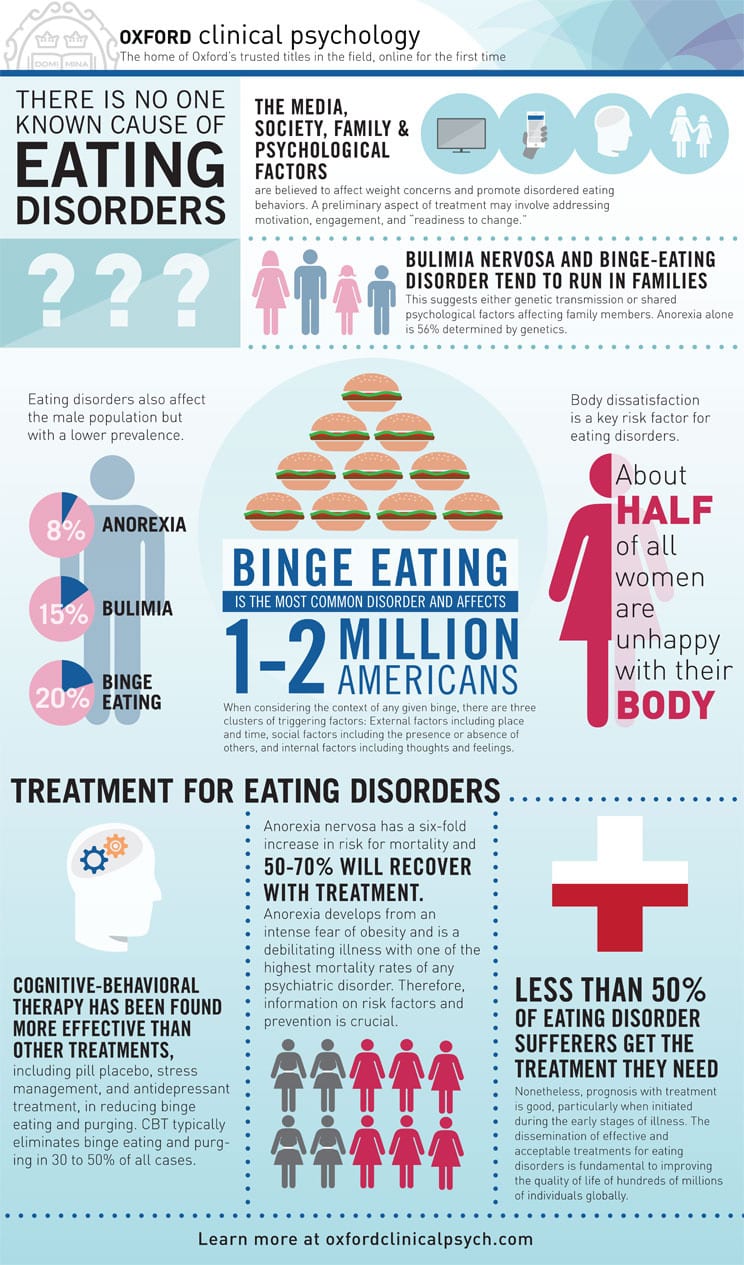Photo Source: OUP.com
Eating disorders are psychological disorders that are characterized by abnormal eating habits and a distorted view of one’s body. They are seen most often in young women in their teens and twenties. Women are two and a half times more likely to develop an eating disorder than men. Here are additional statistics for the three most common types of eating disorders; anorexia nervosa, bulimia nervosa and binge eating disorder.
Anorexia Nervosa
Self-starvation and excessive weight loss are the two symptoms that characterize anorexia nervosa the most. Individuals with anorexia nervosa often have an intense fear of becoming overweight. The malnourishment that comes with anorexia nervosa often leads to even more health related problems since the body lacks the nutrients needed to function properly.
Average age of individuals that develop Anorexia Nervosa: 19 years old.
Lifetime Prevalence:
- Adult population in the United States – 0.6%.
- For women – 0.9%.
Lifetime treatment rate for Anorexia Nervosa: 33.8%
Bulimia Nervosa
Individuals with bulimia nervosa will often compulsively binge on foods and will then go to extreme efforts to purge those foods. They purge foods by either vomiting, fasting, excessively exercising after the meal or even using laxatives to flush the body out. People with bulimia nervosa often carry a healthier weight than those with anorexia, however, they also carry an intense fear of weight gain.
Average age of individuals that develop Bulimia Nervosa: 20 years old.
Annual Prevalence: 0.3% of the adult population in the United States.
Lifetime Prevalence:
- Adult population in the United States – 0.6%
- For women – 0.5%.
Lifetime treatment rate for Bulimia Nervosa: 43.2%.
Annual treatment rate for Bulimia Nervosa: 15.6%.
Binge Eating Disorder
Binge eating disorder is characterized by feelings of a loss of control of food intake and overeating. However, people with binge eating disorder often do not purge their food afterwards. In fact, individuals with binge eating disorder are more likely to be overweight than underweight. These patterns of excessive eating often lead to feelings of guilt. These feelings of guilt can lead to even more binge eating, creating a very destructive pattern of food intake.
Average age of individuals that develop Binge Eating Disorder: 25 years old.
Annual Prevalence: 1.2% of the adult population in the United States.
Lifetime Prevalence:
- Adult population in the United States – 2.8%.
- For women – 4%
Lifetime treatment rate for Binge Eating Disorder: 43.6%.
Annual treatment rate for Binge Eating Disorder: 28.4%.
Reference:




